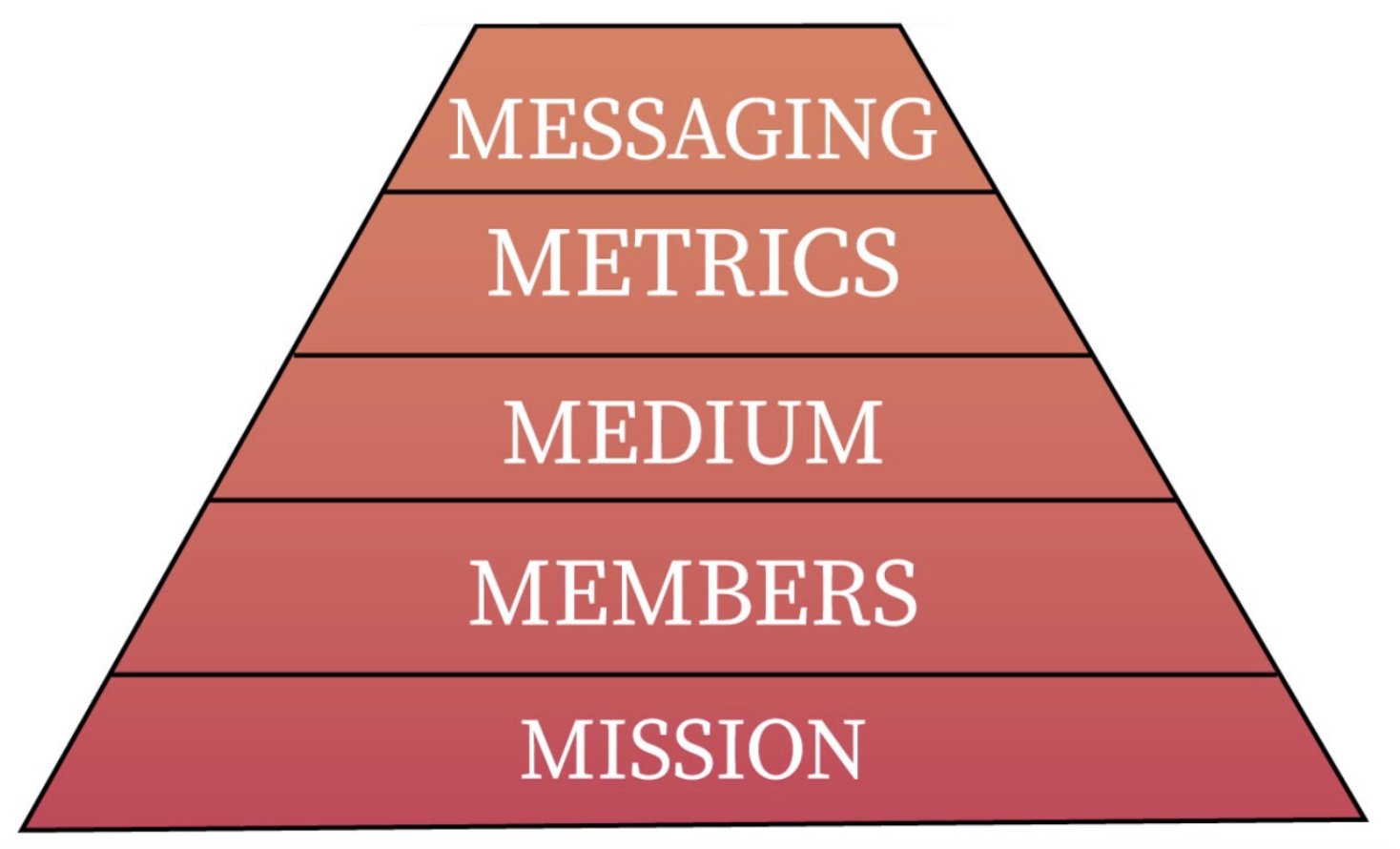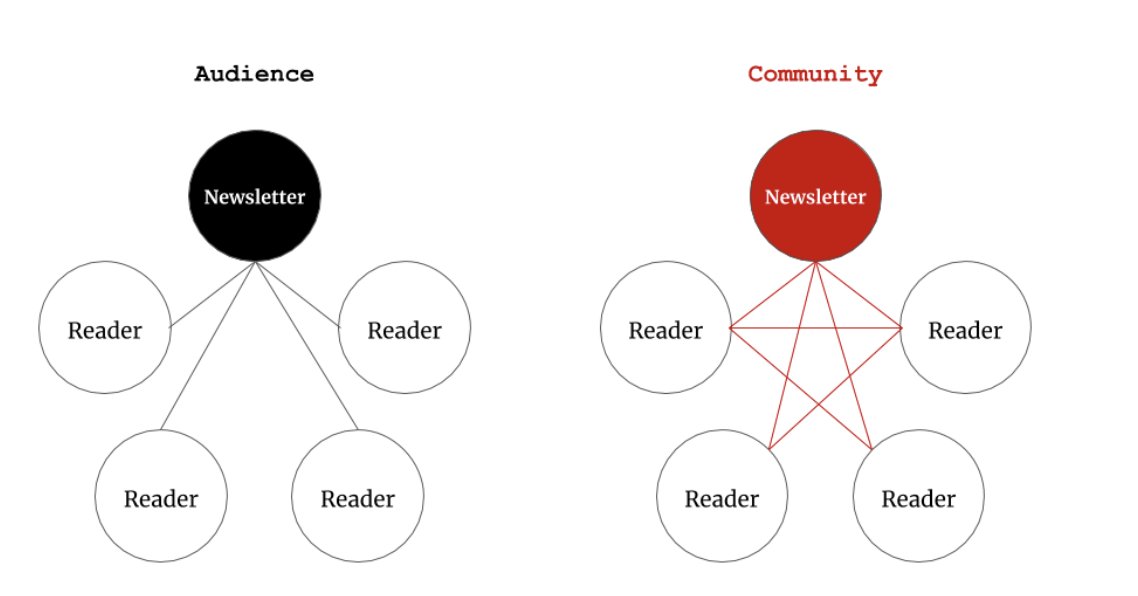
The term community is on everyone’s lips and is already being used inflationarily in various areas of the Internet and communication. In reference to social networks, it applies to marketing and brands as well as to start-ups in the sense of the many new communities that are emerging today outside of these networks. Brands and media are increasingly interested in this term. No wonder, because it brings many advantages for the operator of the community.
In this article, we’ll take a closer look at the whole thing and discuss a small framework that describes the creation of a community well and specifically addresses the primary requirements. We were inspired by this Twitter thread from Ethan Brooks. He calls this the “Pyramid of Priority” (PoP). More on that in a moment.
But first, let’s clarify the term. Because the term community is often not used in a clear-cut way.
What actually is a community?
First of all, a community is a network or a group of users who have a common interest or a regional affiliation, or who pursue a common goal. Online communities are often purely virtual, without the members of the community ever meeting anywhere “on site.
Compared to the classic media or sender model, however, communities differ in that the aim is to connect the members, i.e. the “audience,” with each other. Messages and content are more of a driver than a single, central point of contact.

Functioning communities therefore always develop a life of their own, their own dynamics, which are no longer controlled by a central responsibility alone. This central control is replaced by ethical guard rails and community management. But ultimately, direct, transparent and unfiltered communication with one another is crucial to the characteristic of a community.
By no means everything that is called a community today really is one.
The pyramid of priorities
But what exactly is important when building a community? What are the success factors for successful models and organizations? Ethan Brooks has developed a pyramid for this purpose, which makes important factors very clear. It ranges from flexible to rather static factors that can hardly be changed.
In detail, there are five topics:
Mission: what is the common mission of the members? What change does the community want to achieve?
Members: who or what is the target group?
Medium: on which platform is the community reached? Where does it “live”?
Metrics: How is the success of the community measured and made transparent?
Messaging: Where and how is the community and its members communicated about in marketing and communication channels?
This pyramid should not be understood as a strict process. Communities are always “in flux” and many things change over time.
Mission
The basis of any community is the “why?”. It is the mission, the common goal, which “welds” everyone together. This can be a personal interest, a hobby or of course the local sports club.
“People don’t buy WHAT you do, they buy WHY you do it.”
Simon Sinek
A very good example of this on the corporate side is the company Patagonia. This sells not just T-shirts, but a worldview and a shared belief. So the company’s mission statement is really interesting. Everything is aligned with it. Consumers become a kind of community that aligns with it.
Always important: the factor of change! It’s about improving the lives of the members, the community, the environment, and achieving common goals. To understand these goals exactly, also on an emotional level, is an extremely important factor! What does the community give to the members that they can’t find anywhere else? Why do they desire exactly that?
Members
The community lives from its members. They have something in common. The clearer this is, the more the community distinguishes itself from the outside world and the clearer it becomes who belongs and who does not.
A real expert in the field of “Belonging” is Douglas Atkin, who was responsible for the community for Meetup and Airbnb.
It’s important to have an accurate idea of your members. Who are these people? What drives them? The best way to find this out is to talk and listen to them a lot, often and extensively. This is less about classic marketing personas, but about real exchange.
The bottom line is that every community starts small. In the beginning, a core of users is often formed. Understanding them as best as possible is worth more than any marketing persona in a chat.
Medium
Apart from the basic values and drivers, there is of course also the essential question of which platform is used technically and organizationally to “run” the community. Here, tchop offers everything to combine the relevant aspects in a unique way in its own app. The possibilities are so diverse that we are already experiencing a large, growing variety of community types who are using our solution creatively and diversely.
The assessments of the medium are universally valid in this regard:
- How can members communicate?
- How can they communicate with each other?
- What are the possibilities to activate the community?
- With how much effort can all this be managed?
- How much control do you have over content and communication?
- Do you have full control over customer relations, data and monetization?
Metrics
Communities often follow very emotional factors and content. However, whether and how they are successful can usually be seen in very hard numbers and factors. Measuring these factors specifically and tracking them continuously is the 1:1 of community management.
Our platform offers many important KPIs on a daily updated dashboard:
- Daily Active Users
- Monthly Active Users
- Daily sessions (incl. length of sessions)
- Content data (what is used and how)
- Push notifications (which are opened how often)
The data can be analyzed, viewed and technically used in any way. The possibilities are hardly limited. But it also applies:
“Not everything that can be counted counts, and not everything that counts can be counted.”
Ethan Brooks
Data is important, but it’s always the conclusions you draw from it that are decisive. And drawing the right conclusions often requires a mixture of facts and intuition.
Messaging
Every community gets to the point where it takes active, optimized marketing and communications efforts to attract new members. This includes all steps until a user actually becomes a member: the onboarding, the welcome message at the start, community events and special offers and other initiatives of all kinds. Of course, there are also classic communication measures in the usual channels such as social media, via newsletters, in multimedia (e.g. in podcasts or videos) or, of course, in real life (e.g. at events).
At the top of the pyramid, this should build on the points already mentioned and stringently convey and “support” them. It is always important to “experiment” and consequently to learn.
Because, as I said, communities change, especially when they grow.
Summary
Successful community management is becoming increasingly important for brands and media, for companies and start-ups. The aspects mentioned in the consideration of the pyramid offer an exciting guideline for this. It makes sense to keep all these points in mind and to develop them in a targeted manner.
The target group and the topic of the community are decisive for the type of community and which channels and tools make more or less sense.
There is no universal solution that always fits equally well. But there are factors that need to be controlled and managed. tchop is focused on the efficient management of these factors.
Contact us if you want to know more about the possibilities. The starting points for communities can be manifold – whether you run your own newsletter, a podcast, whether you are a traditional media house or a start up.
Building your own community usually pays off quickly!






